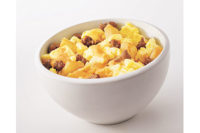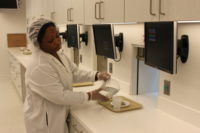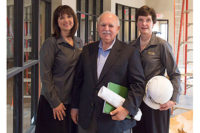Hillshire Brands Q&A: The tortoise and the hare
Hillshire Brands’ R&D strategies make plenty of room for methodical development and “Sprinter” projects to take shape at the innovation center in Downers Grove, Ill.
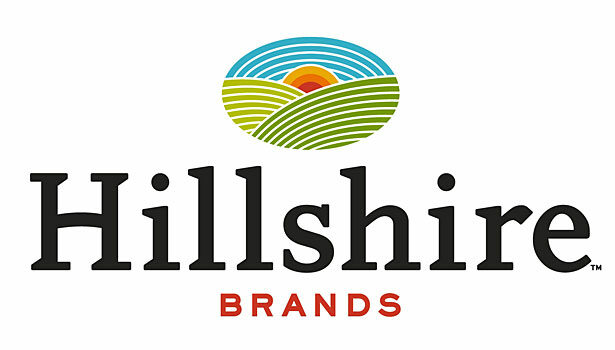

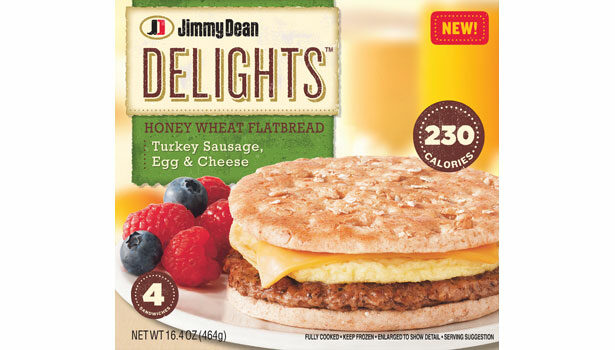
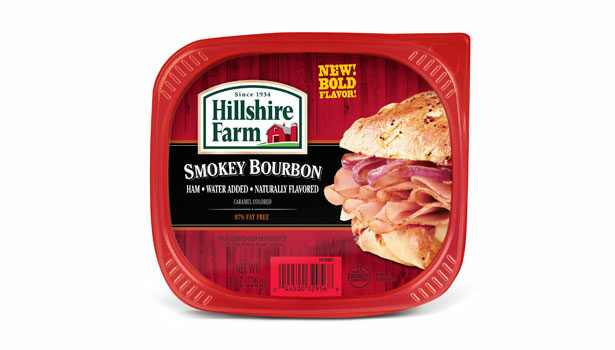






Andy Hanacek, editor-in-chief of The National Provisioner, again visited Hillshire Brands’ innovation center in Downers Grove, Ill., in June 2013. During this visit with Jeff George, senior vice president of Research & Development, Hanacek discussed the opening of the Flavor Innovation Lab, the further development of the SNOW Day concept and Hillshire Brands’ improved speed to market. This is the latest installment in a series of regular check-ins with the Hillshire team. What follows is the second conversation between Hanacek and George:
You recently celebrated (internally) the grand opening of the Flavor Innovation Lab, which you just renovated in the last six months — when did that lab actually become functional, and what differentiates it from the Seasoning Lab?
George: We had an open house around May 1st. But it’s already being heavily used — there are five different partner suppliers that are working out of that facility.
… In terms of the Flavor Innovation Lab versus the Seasoning Lab, it actually builds on a best practice we have found to be effective. We’ve had seasoning suppliers working out of our facility now for [nearly two years], and we’ve found that to be tremendously successful in terms of cutting down wait times, having a deep understanding on both sides, and also coming up with new ideas. We have a seasoning supplier on site almost every day of the week. We took that idea and, led by senior flavor scientist, Barbara Schmitt, we expanded it on the flavor side, working much more closely with our flavor-supplier partners. It’s the same thing — side by side with scientists, taking ideas like our new Smokey Bourbon product that started as a concept.
So, Smokey Bourbon ham sounded interesting, [and consumers were interested], but what does that name actually mean?
Geroge: So in the Flavor Innovation Lab, we worked with our partner suppliers and with consumers to understand the flavor notes that best suggest a Smokey Bourbon profile: the smoke, the bourbon, the natural ham notes and how all three come together to create a really unique eating experience and flavor experience.
Some people might assume that with this great Flavor Innovation Lab and the science available in the R&D world nowadays that the Smokey Bourbon product uses a manufactured bourbon flavor, but you are actually using bourbon to provide some of that flavor, correct?
George: Yes, we are, but that’s an interesting point. We are as sophisticated as we have ever been in flavor development. That enables us to deliver those flavors in a natural way, so all of our meat flavors come from natural ingredients and natural sources. From an R&D and scientist’s standpoint, however, a lot of times that makes things more challenging. You could create a synthesized, artificial molecule that delivers exactly the taste you want, but when you have to source that molecule from nature [like we do], it gets quite a bit more difficult. That is why having the capabilities of these labs will help us. We want — and consumers want — more authentic natural ingredients and flavors, and we need these tools to be able to deliver them.
Correct me if I’m wrong, as I’m not an R&D scientist, but theoretically, you could do a bourbon-flavored item and use straight bourbon, but that won’t impart as much flavor as some of these molecules that you might develop that would enhance the flavor or have it more highly concentrated, correct?
George: Yes, you want the flavors to come from the natural ingredients, but you also want those flavors to come through. The challenge is to be able to do both, so have them come from the natural sources, but be able to survive through manufacturing, processing and shelf life. So that once the consumer tastes it, it’s not only the authenticity of the label, but the experience that they have. It’s critical to be able to do both.
Beyond flavor and taste, do these two labs work on functional ingredients and the functionality of the ingredients as well?
George: If we are trying to deliver shelf life, or trying to deliver improved nutrition, almost always there are flavor and seasoning challenges associated with those changes. We use those same technologies and same suppliers, for instance, to help maintain the right flavor profile over the course of a shelf life, or to help us make the adjustments needed to add ingredients that can to help us lower sodium, for example.
Let’s shift gears and talk about the creativity aspect, especially around the new foodservice pies you’ve developed and launched. I know that we are a meat magazine, but this is a perfect example of how the innovation center is working in the “new” Hillshire Brands. Can you elaborate on these new pie products and talk about how the innovation center was central to their development?
George: The official name of the product is Luxe Layers. It started off internally named ‘Stuffed Crust Pies,’ as it was inspired by stuffed-crust pizzas here in the Chicago area. It’s a great example of our innovation center at work, as it was an idea that was generated by a team led by Olivia Kelvin, who works in the bakery group. We encourage and incent our folks to come up with new ideas. We are R&D, and thus we should be part of the innovation engine of this company. This idea was created out of an employee-generated idea program similar to the SNOW Day process we we discussed in the Q&A earlier this year.
I was going to ask if this was a SNOW Day project, and how that program had progressed since last we spoke …
George: SNOW Day is up and running, and flying — we have lots of ideas, and many, many meat-related ideas and dessert-related ideas as well. That said, predominantly meat innovation ideas have come out of SNOW Day.
As you may recall, it’s a once-a-month event, and we are almost a year into it now. It’s been very exciting, and we’ve just had SNOW Day written up as an industry best practice by the [third-party organization] Corporate Executive Board in terms of R&D best practices. … But it’s also been a fun event where we’ve had great engagement and great participation. In fact, in April, Sean Connolly [president and CEO of Hillshire Brands] and the entire executive team came out and participated in SNOW Day. He and his team also were out in the pilot plant and the labs throughout the day, as people are also prototyping and working on their own ideas.
So, from concept to launch for the Luxe Layers pies, what was the rough timeframe?
George: For that product, we had to go into our plant and modify equipment to be able to run it, so in that case the timeline was more than a year from when it was conceived to where we are now, just in the process of starting up and manufacturing the pies. But for something like Smokey Bourbon Ham, the timeline would be much shorter as no equipment would be required. It’s a flavor profile.
Have you seen an increase in speed to market since reinvesting in some of these areas in the past year plus?
George: Now that we have the Flavor Innovation Lab, Seasoning Lab and everything in house, as well as a director of culinary, Amanda Zimlich, we are able to develop at the front end much faster than we were before. We are seeing a general increase in speed to market across all of our innovation. But the other thing we have done is, look at our innovation processes. We had some innovation processes in the old Sara Lee Corp. that were very robust and very disciplined, and that was appropriate for a big company with a very complex business. Now that we’re Hillshire Brands, a focused pure-play type of company, we are reassessing our innovation process, looking at being lean, entrepreneurial and faster decision-makers.
One new element of this is the development of a ‘Sprinters’ designation for some projects. Sprinter projects don’t necessarily skip steps in the process, but with focus and fast decision-making, we are able to accelerate Sprinters from conception through launch. An example of a Sprinter project is our recently launched Jimmy Dean Delights Flatbread product. In fact, that was our first official Sprinter project.
Nearly a year ago, on Investor Day, we mentioned time to markets that were around a year. We went from inception to launch on Flatbreads in about 16 weeks. Certainly that’s a dramatic improvement from where we had been, and compares well with the best in industry. Going forward, we’re going to continue to see improvement in time to market, and I also expect to continue to see a tiered approach — everything we launch is not going to launch in 16 weeks.
Were the Flatbread sandwiches a SNOW Day project?
George: That was not a SNOW Day project. It actually was driven by multiple factors, including the move by consumers to healthier offerings with flavor variety as well. We’ve talked a lot about flavor today, and that’s for a good reason. We’ve talked about health as well, and the combination of the two is very powerful. If you can deliver the flavor with a better nutritional profile and no tradeoffs, that really wins in the marketplace. We believe the Egg White, Spinach and Cheese Flatbread is a pretty revolutionary product for the Hillshire Brands company, because you’d ask, ‘Where’s the meat?’ It would have been a blasphemy years ago to think about a Jimmy Dean-branded product without meat in it. But it goes beyond just the removal of the meat. The fact that you have egg whites, spinach and a different sort of taste and flavor profile in the flatbread itself.
So that was something that evolved out of consumer insights as opposed to a SNOW Day?
George: Innovation comes from everywhere, and it always will. Much of what we do in R&D comes from ideas initiated by consumer demands, and is sensitive to trends in the marketplace, aware of what competitors are doing, and tuned into what customers are [requesting]. Those are all great sources of innovation, and we want all of that. But also we want our scientists, technologists and engineers to come up with ideas too, whether it be new products or enabling technologies.
Looking for a reprint of this article?
From high-res PDFs to custom plaques, order your copy today!




